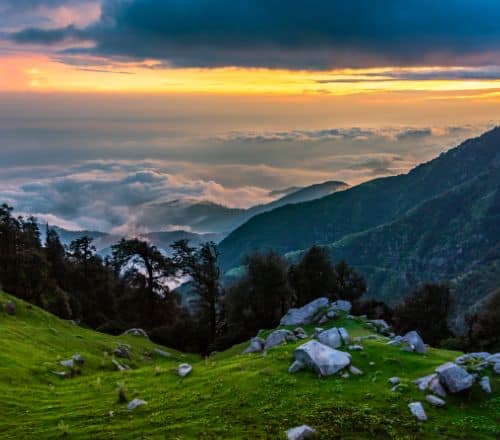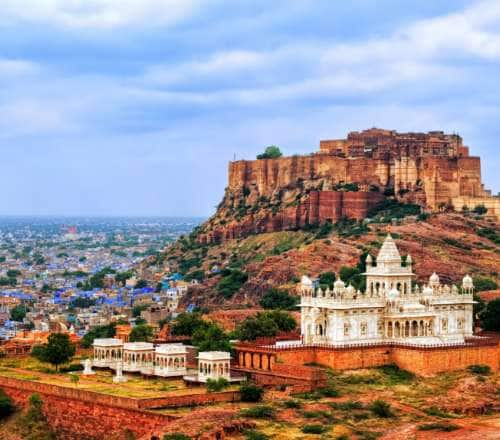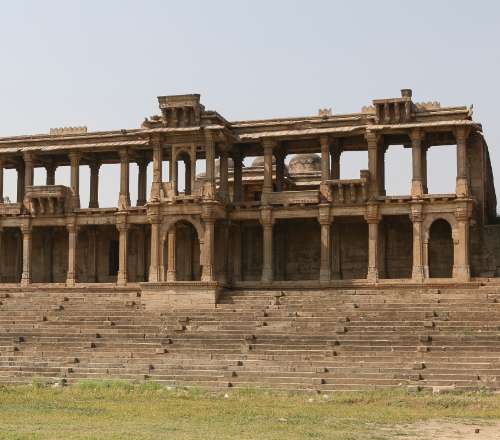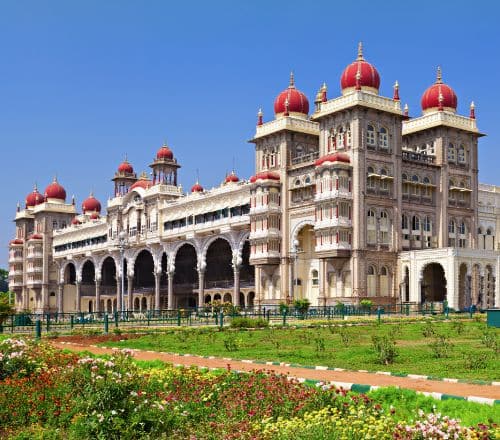Stay logged in to proceed with bookings, orders and offers.
On changing the terminal, you will loose items in your cart. Are you sure you want to change your terminal?
The medieval city of Aurangabad is blessed with ancient caves, natural beauty, and cultural delights. This makes the city an excellent choice for a weekend getaway.
Since my childhood, I had heard tales about the famous city of Aurangabad, its name resonating through the pages of my history textbooks. Yet, it wasn't until my adulthood that I had the opportunity to discover the city, and was left utterly fascinated by it. The city still wears an old-world charm and is home to several historical landmarks. Aurangabad was founded in 1610 by Malik Ambar as "Khadki" and was renamed in honour of the Mughal Emperor Aurangzeb. Today, it is not only recognised as an important industrial hub in Maharashtra but also holds the title of being the tourism capital of Maharashtra, as declared by Maharashtra Tourism in 2010. Aurangabad showcases its deep-rooted Mughal influences while blending them with diverse cultures. The city is home to numerous noteworthy monuments, including the 52 gates built by Aurangzeb. This earned the city the well-deserved moniker of "City of Gates". The historical heritage of Aurangabad also includes the iconic sites of Ajanta and Ellora Caves, among others, which draw both local and international tourists. Now, let me take you through an exciting three-day itinerary that unravels the mighty sites of Aurangabad while immersing you in its cultural allure.
No visit to Aurangabad is complete without embarking on a journey to the famous Ajanta and Ellora caves. To tick this off my bucket list, I started my morning early with a scenic drive that led me to the mesmerising Ellora Caves. Situated 30 km from the city, these caves are a UNESCO World Heritage Site, carved into the side of a basaltic hill. One of the greatest examples of cave-temple architecture in India, the Ellora Caves complex comprises 34 rock-cut shrines representing three religions—Buddhist, Jain, and Hindu. The 12 caves to the south are Buddhist—the 17 in the centre are Hindu, and the five caves to the north are Jain. Undoubtedly, the most remarkable site here is the Kailash Temple, a breathtaking replica of Lord Shiva’s celestial abode on Mount Kailash. Commissioned by Buddhist, Jain, and Shaivite rulers, these caves lead visitors to intricately designed temples and statues, ornamented with religious and secular figures.
What is most incredible is that these structures were not constructed using separate pieces of rock. Instead, the artisans chipped away a rock cliff face until a magnificent structure—of 34 monasteries and temples—emerged from the rock. It looks almost as if it had been concealed within the Deccan Plateau, waiting to be revealed like a glorious vision. The structure is the best example of rock-cut architecture and nothing short of an engineering marvel. Given the caves' remote location, reaching the site requires a lot of walking and some climbing. However, the arduous journey is well worth the awe-inspiring sights you get to experience once you reach the spot.
When in Aurangabad, as one wears a historian hat, one should also borrow their shoe! After my explorations at Ellora, I found myself ascending once again, this time to explore the mighty Daulatabad Fort. The fort houses the remains of Hindu and Jain temples similar to those at Ajanta and Ellora. The fort also boasts notable monuments, including the Chand Minar, a 63 metre majestic tower that resembles the Qutub Minar, in Delhi. While exploring the fort, I also got to meet a few monkeys who made the fort their permanent abode. My next stop was Bibi-ka-Maqbara, the mausoleum of Aurangzeb’s first wife, Dilras Bano Begum. It was commissioned in 1660 by Aurangzeb's son, Prince Azim Shah, in memory of his mother. This is also the second-largest monument built by Aurangzeb. Often referred to as the "Taj of the Deccan", it bears a striking resemblance to the Taj Mahal in Agra. Although it is not nearly as grand as the Taj Mahal, it is still worth a visit.
The next day, the first item on my agenda was a visit to Ajanta Caves, which is arguably one of the best cave monuments in India. Dating from the 2nd century BCE to the 6th century CE, Ajanta Caves are particularly known for their predominantly Buddhist artistry. Once again, I stood in awe of the imagination, patience, and dedication of the artists who crafted these works. The caves house paintings and sculptures that are influenced by Buddhism and narrate the Jataka tales. As I wandered through these ancient chambers, it felt like I had stepped into a time machine, taking me back many centuries to a place of solitude and humility. After immersing myself in the wonders of history, I decided to learn more about the rich culture and traditions of Aurangabad. Towards this end, I ventured to a well-known establishment that specialises in the art of Himroo fabric weaving. Himroo is made from silk and cotton, which are locally grown in Aurangabad. The fabric was largely patronised by Mughal royalty. Himroo features Persian designs woven with gold and silver threads. It takes its name from Hum-ruh, which means "similar" in Persian, as it is a replica of the Kum Khwab fabric that was once popular in royal courts before Himroo gained precedence.
To complete my shopping experience, I visited a store to pick up Paithani sarees, which are a staple of this region in Maharashtra. These timeless sarees date back to the times of the Rigveda. Named after the town of Paithan in Aurangabad, these sarees are meticulously handwoven. Crafted from fine silk, Paithani sarees are considered to be one of the most opulent in the world. After careful consideration, I chose a red and green Paithani saree to take home. While cultural and historical attractions provide valuable insights into any city, I believe that to truly understand a city, one must explore its food. Fortunately, Aurangabad boasts a thriving culinary scene. For a taste of authentic Maharashtrian thali, I visited Naivedya Thali Restaurant. From the refreshing sol kadhi and comforting varan to sabudana khichdi and ghee-laced puran poli, I enjoyed everything that was served in my Maharashtrian meal. While the city reveals spectacular sights to explore during the day, the desire to witness the transformation of Aurangabad at sunset led me to Buddi Lane, Aurangabad's own Khau Galli or food street. The bustling street is full of eateries, takeaway joints, and street carts selling everything, from chicken shawarma, spicy kebabs, and biryani to piping hot tea and samosas. After tasting hot kebabs right off the charcoal grills, I settled for some mawa jalebi to satisfy my sweet tooth.
The ideal time to visit Aurangabad is from September to February when the weather is pleasant. The city experiences hot weather from March to June. Be sure to carry sufficient drinking water and use sunscreen if you are planning to visit the city in the summer months.
Aurangabad has many more places for sightseeing, including Bani Begum Garden, Panchakki, Grishneshwar Temple, and the Gul Mandi market, among others. Unfortunately, my quick getaway to this city meant I had to give some places a miss on this trip until I visit again. A visit to Aurangabad will surely enthral history buffs and refresh your history lessons. I wish I had explored it during my childhood too as a first-hand visit would have definitely helped me ace my history tests!





The Adani One expressly disclaims all liability, direct and indirect, in respect to actions taken or not taken based on any or all the contents of this Blog. The Blog is an opinion of the contributor based on the collation of data from various sources and is provided only for information purpose. Adani One does not canvass, advertise, solicit, invite or induct for any product, merchandise, information, brand or any other materials mentioned in the Blog, nor does it obtain any monetary benefit from the same. Reader is advised to read and apply his/her intellect and discretion in this regard. Any Intellectual Property mentioned in this blog belongs to the rightful owner. We do not intent to claim any interest over the same.